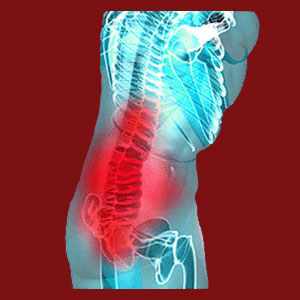
Facet joint pain bending might occur in the lower back or even in the neck, in far less common circumstances. Bending is the act of flexing the spine and the facet joints are directly responsible for regulating the safe range for this type of movement, as well as many other types of motion in the spinal column, including extension, lateral movement and rotation.
Forward bending is a common trigger for back pain and even neck pain. However, although spinal abnormalities take the blame for most instances of flexion-related pain, the actual underlying symptoms are usually experienced in the muscles and not in the spine. This is one of the things that every clinician knows for sure, but rarely questions when it comes to diagnostic evaluation of spinal causative sources. However, in cases of facet joint pathology, pain might be directly linked to forward flexion of the spine due to purely mechanical reasons.
This essay explores how the facet joints can contribute to forward bending lower back pain. We will also seek to differentiate symptoms that occur in the muscles in contrast to those which actually originate in the spinal apophyseal joints.
Local Facet Joint Pain Bending
Localized pain upon spinal movement is an accurate symptom of facet joint syndrome and some forms of hypertrophy. Pain is typically limited in location to the affected joint(s) and is mild to moderate in severity. The pain rarely endures for much longer than the duration of movement. Facet pain can be referred, but this is a controversial theory in many instances, due to the extremely tiny size and limited innervation possibilities of the affected nerves producing pain.
Usually, true facet joint pain experienced while bending will be tolerable and some cases surely fall into the realm of “normal age-related” aches and pains. However, some patients will experience more severe pain through focal ranges of motion in particular spinal segments, as well as the possibility of restricted movement or even total inability to mechanically mobilize a joint past a stop point.
Severe and Widespread Spinal Joint Pain Bending
Virtually all of the cases of severe and regional pain that we see do not make sense as facet syndrome diagnoses. However, patients come to us with exactly that diagnosis and it amazes us how many doctors would make such a verdict with such little evidence pointing to the facet joints as the causative process for pain. Most of these patients experience obvious muscular pain, often quite a distance off the center spine. The pain often travels up and down, which is particularly illogical for a facet joint diagnosis involving only one or two degenerated levels.
Furthermore, patients usually respond well to symptom-based care that targets muscular issues, such as heat, ice, massage, and exercise therapy. The positive results attained would not seem logical given a facet arthritis condition.
We know that many facet joint diagnoses are nothing more than scapegoats to explain many of these dorsalgia syndromes. While the facet joint might be degenerated, hypertrophic or affected by other irregularity, the symptoms just do not correlate. Therefore some, if not all, of the true underlying origin of symptoms remains unknown and subsequently untreated. Is it any wonder that treatment fails?
Facet Joint Pain Bending Factsheet
Mechanical pain that is experienced while bending is certainly possible in facet syndrome scenarios. However, just be sure that the symptoms correlate to the diagnosis in a scientifically-sound way. Some care providers will provide long-winded and contrived reasons why pain from a degenerated facet joint might affect 6 different muscular structures over a 6 vertebral level region. It makes no sense and subscribing to this nonsense will only doom you to abysmal therapy results.
If you are not sure whether a facet joint is the true source of your bending-related pan, get a second opinion or even a third. This is a far smarter path than going into treatment blindly or with obviously non-correlating symptoms.
If the diagnosis is accurate and the symptoms correlate, then treatment is usually considered optional. Some cases might resolve with time and mechanical wear on the arthritic formations. Other cases might worsen and cause the joint to become increasingly hypertrophic. However, if the pain is tolerable, then it might be prudent to go with conservative care and see how the syndrome progresses before deciding on any drastic treatment or surgery.
Facet Joint Pain > Facet Joint Facts > Facet Joint Pain Bending





